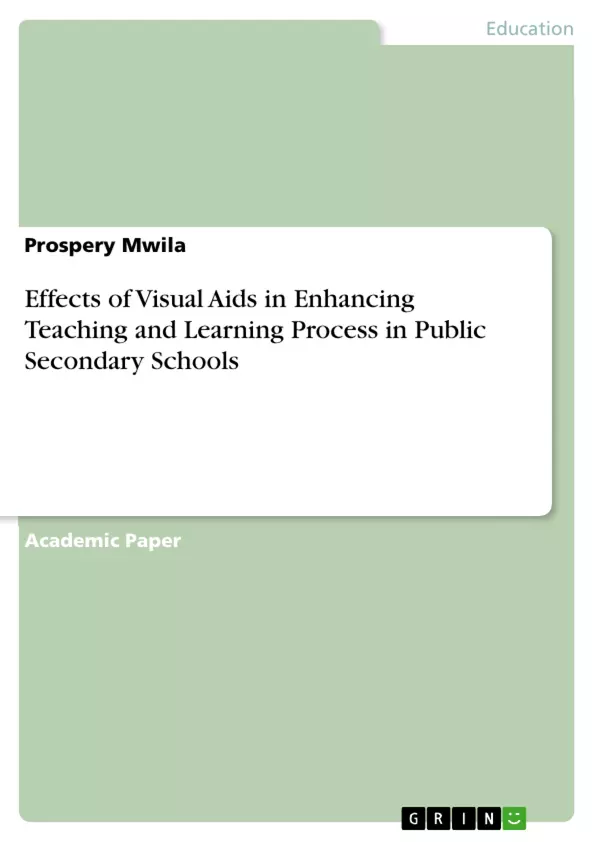The aim of this study was to investigate the effects of visual aids in enhancing teaching and learning process in public secondary schools in Ilemela Municipality, Tanzania. Specifically, the study sought to describe visual aids used by teachers during the teaching and learning process and to find out the views of teachers and students about the effects of using visual aids in the teaching and learning process. The study was guided by Skinner's instructional theory (1974). A mixed research approach was employed, under which the convergent parallel research design was used.
A sample size of 111 participants was selected, including students, teachers, school academic masters, heads of schools, and school quality assurance officers were involved in order to provide the required information. Data was collected through questionnaires and interview guides. The quantitative data was analysed using SPSS version 20 and presented on tables in frequencies and percentages, while the qualitative data was coded and analysed thematically.
Table of Contents
- Introduction
- Literature Review
- Research Objectives
- Research Methodology
- Data Analysis and Presentation
- Findings
- Discussion
- Conclusion and Recommendations
- References
Objectives and Key Themes
This study aims to investigate the impact of visual aids on the teaching and learning process in public secondary schools in Ilemela Municipality, Tanzania. The research examines the types of visual aids employed by teachers, the perceptions of teachers and students regarding their effectiveness, and the overall contribution of visual aids to improved learning outcomes.
- The role of visual aids in enhancing the teaching and learning process.
- The types and frequency of visual aids utilized by teachers.
- The views of teachers and students on the benefits and limitations of using visual aids.
- The potential impact of visual aids on student engagement, comprehension, and academic performance.
- Recommendations for promoting effective use of visual aids in the Tanzanian educational context.
Chapter Summaries
The introductory chapter provides a comprehensive overview of the study's context and significance. It delves into the importance of visual aids in education, outlining the theoretical frameworks underpinning their use and exploring existing research on their effectiveness. The chapter also addresses the specific research gap this study aims to fill.
The literature review section provides an in-depth analysis of existing research on the use of visual aids in teaching and learning. It explores studies from Tanzania and other countries, highlighting key findings related to the impact of visual aids on student engagement, comprehension, and performance. The review also examines the factors influencing the adoption and effectiveness of visual aids in different educational settings.
The research methodology chapter outlines the research design, data collection methods, and data analysis techniques employed in the study. It describes the participant selection process, the instruments used to collect data (questionnaires and interview guides), and the statistical and thematic analysis approaches used to interpret the findings.
Keywords
This research focuses on the use of visual aids in the teaching and learning process, exploring their effects on student engagement, comprehension, and academic performance. The study examines the perspectives of both teachers and students in public secondary schools in Ilemela Municipality, Tanzania. Key concepts include visual aids, teaching and learning process, student engagement, comprehension, academic performance, and the Tanzanian educational context.
- Quote paper
- Prospery Mwila (Author), 2021, Effects of Visual Aids in Enhancing Teaching and Learning Process in Public Secondary Schools, Munich, GRIN Verlag, https://www.grin.com/document/1250185



